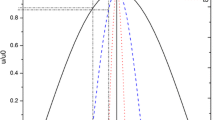Abstract
Buildings with the singly symmetric plan are more vulnerable to earthquake actions than the buildings with a symmetric-plan arrangement since the torsional effect caused by the asymmetricity will induce higher seismic demand and may cause unexpected damage to the buildings. Thus, it is a crucial challenge for researchers and engineers to predict seismic demands of asymmetric-plan buildings for the possible strengthening and retrofitting. Although some pushover-based analysis methods have been proposed for the fast prediction of asymmetric-plan buildings, most of them do not reasonably consider the dynamic coupling of vibration modes. This paper expands the spectrum-based pushover analysis (SPA) procedure, which is proved to be effective in predicting seismic demands of buildings with symmetric building plans, to three-dimensional structure systems, to estimate the seismic demands of singly symmetric structures. A comprehensive case study, which includes six frame buildings with different structural heights and mass eccentricity ratios under various levels of the input motions, was conducted to investigate the feasibility of the SPA method in estimating the seismic demands of one-way asymmetric-plan buildings. It is found from the comparison of seismic demands computed from the SPA method, the nonlinear response time history analysis, the consecutive modal pushover analysis and the modal pushover analysis that the SPA method is capable of predicting the seismic demands very well, in particular, the demands on the heavy side of the structure, where the seismic demand and damage are more significant.










Similar content being viewed by others
References
Antoniou S, Pinho R (2004a) Advantages and limitations of adaptive and non-adaptive force-based pushover procedures. J Earthquake Eng 8:497–522
Antoniou S, Pinho R (2004b) Development and verification of a displacement-based adaptive pushover procedure. J Earthquake Eng 8:643–661
Antoniou S, Rovithakis A, Pinho R (2002) Development and verification of a fully adaptive pushover procedure. In: Proceedings of the twelfth european conference on earthquake engineering
ASCE (2013) Minimum Design Loads for Buildings and Other Structures (ASCE/SEI 7-10). American Society of Civil Engineering, Reston, Virginia
Bergami AV, Forte A, Lavorato D, Nuti C (2017) Proposal of an incremental modal pushover analysis (IMPA). Earthq Struct 13:539–549
Bhatt C, Bento R (2014) The extended adaptive capacity spectrum method for the seismic assessment of plan-asymmetric buildings. Earthq Spectra 30:683–703
Brozovič M, Dolšek M (2014) Envelope-based pushover analysis procedure for the approximate seismic response analysis of buildings. Earthq Eng Struct Dyn 43:77–96
Chopra AK (2012) Dynamics of structures: theory and applications to earthquake engineering, 4th edn. Prentice Hall, Hong Kong
Chopra AK, Goel RK (2002) A modal pushover analysis procedure for estimating seismic demands for buildings. Earthq Eng Struct Dyn 31:561–582
Chopra AK, Goel RK (2004) A modal pushover analysis procedure to estimate seismic demands for unsymmetric-plan buildings. Earthq Eng Struct Dyn 33:903–927
Chopra AK, Goel RK, Chintanapakdee C (2004) Evaluation of a modified MPA procedure assuming higher modes as elastic to estimate seismic demands. Earthq Spectra 20:757–778
CSI (2011) SAP2000 v-15.0: integrated finite element analysis and design of structures basic analysis reference manual, Computers and Structures Inc, Berkeley, California
FEMA P (2000) Commentary for the seismic rehabilitation of buildings. FEMA-356, Federal Emergency Management Agency, Washington, DC
Khoshnoudian F, Kiani M (2012) Modified consecutive modal pushover procedure for seismic investigation of one-way asymmetric-plan tall buildings. Earthq Eng Eng Vib 11:221–232
Kreslin M, Fajfar P (2012) The extended N2 method considering higher mode effects in both plan and elevation. Bull Earthq Eng 10:695–715
Liu Y, Kuang JS (2017) Spectrum-based pushover analysis for estimating seismic demand of tall buildings. Bull Earthq Eng 15:4193–4214
Ohtori Y, Christenson R, Spencer B Jr, Dyke S (2004) Benchmark control problems for seismically excited nonlinear buildings. J Eng Mech 130:366–385
Poursha M, Khoshnoudian F, Moghadam A (2009) A consecutive modal pushover procedure for estimating the seismic demands of tall buildings. Eng Struct 31:591–599
Poursha M, Khoshnoudian F, Moghadam A (2011) A consecutive modal pushover procedure for nonlinear static analysis of one-way unsymmetric-plan tall building structures. Eng Struct 33:2417–2434
Poursha M, Khoshnoudian F, Moghadam A (2014) The extended consecutive modal pushover procedure for estimating the seismic demands of two-way unsymmetric-plan tall buildings under influence of two horizontal components of ground motions. Soil Dyn Earthq Eng 63:162–173
Reyes JC, Chopra AK (2011a) Evaluation of three-dimensional modal pushover analysis for unsymmetric-plan buildings subjected to two components of ground motion. Earthq Eng Struct Dyn 40:1475–1494
Reyes JC, Chopra AK (2011b) Three-dimensional modal pushover analysis of buildings subjected to two components of ground motion, including its evaluation for tall buildings. Earthq Eng Struct Dyn 40:789–806
Shakeri K, Tarbali K, Mohebbi M (2012) An adaptive modal pushover procedure for asymmetric-plan buildings. Eng Struct 36:160–172
Acknowledgements
The study was supported in part by the Research Grants Council of Hong Kong under Grant Number 16209115.
Author information
Authors and Affiliations
Corresponding author
Additional information
Publisher's Note
Springer Nature remains neutral with regard to jurisdictional claims in published maps and institutional affiliations.
Rights and permissions
About this article
Cite this article
Liu, Y., Kuang, J.S. Estimating seismic demands of singly symmetric buildings by spectrum-based pushover analysis. Bull Earthquake Eng 17, 2093–2113 (2019). https://doi.org/10.1007/s10518-018-00534-8
Received:
Accepted:
Published:
Issue Date:
DOI: https://doi.org/10.1007/s10518-018-00534-8



